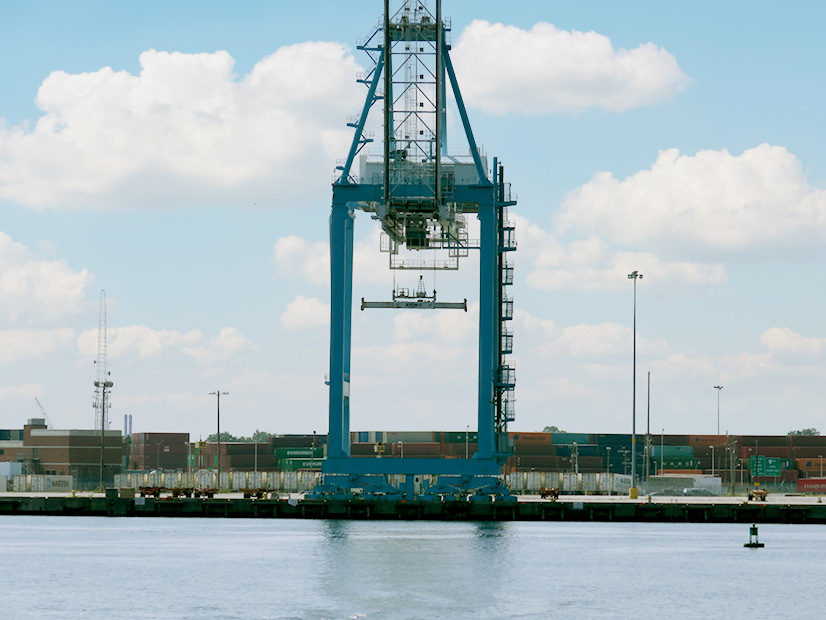
In the competition to become a top supply-chain hub for the East Coast offshore wind industry, Virginia is looking to harness the workforce, facilities and experience embedded in the Port of Portsmouth to give it the edge in the effort to create a supply chain to serve not only its own wind industry but those of other states along the coast.
The experience accrued at the state’s break-bulk and container ports, and the workforce of longshoremen there, coupled with the fact that there is plenty of space in and around the port, make it a natural location for an offshore wind hub, speakers at the Virginia Clean Energy Summit said Tuesday.
“We have some assets that just aren’t matched elsewhere on the East Coast,” Matt Smith, director of offshore wind for the Hampton Roads Alliance, an economic development organization, said as he moderated a forum panel called “Positioning Virginia as the supply chain hub for Offshore Wind on the East Coast.”
He said the port is looking to “become a hub that can support projects up and down the East Coast, and that may entail component manufacturing, bases for vessels, ongoing operations and maintenance.”
“Our port infrastructure is by far the best suited to support the industry on the East Coast,” he said. “We have the largest and very skilled maritime workforce. And Virginia is continually rated as a top state for business.”
Tough Competition
To fulfill that ambition, the port will have to overcome several contenders making similarly aggressive moves to serve the 18 projects in development along the coast, of which 11 are advanced in the permitting stage. Among the contenders are Maryland and New Jersey, which is vigorously creating the New Jersey Wind Port on the Delaware River, about 250 miles to the North of Portsmouth. (See New Jersey Shoots for Key East Coast Wind Role.)
A key advantage for the Port of Portsmouth over some ports to the North of Virginia, is that vessels leaving the Virginia port loaded with turbines — which are transported upright — do not pass under a bridge, said Chris Gullickson, director of economic development for the Port of Virginia.
“There’s obviously a robust base of manufacturing maritime skills that exist” in the port, Gullickson said. “It’s in the fabric of our community, working either on the waterfront, or being involved in maritime activity.”
Port of Virginia officials have said in the past that they realized early on that even terminals built to handle container and bulk vessels did not have the capacity to handle the size and weight of the offshore wind components. In response, the port spent $40 million on infrastructure upgrades.
Dominion Energy is developing a 2.6-GW, 180-turbine wind project 27 miles off the coast of Virginia Beach with a predicted date to be in service of 2026. The Port of Virginia in August announced an agreement with the developer to lease 72 acres of its Portsmouth Marine Terminal for 10 years to support the development of the wind project. (See Dominion Secures 10-Year Va. Port Lease for OSW Staging.)
Ørsted, which is developing wind farms off the shore of Delaware and New Jersey, reached an agreement last year with the Port of Virginia for an initial 1.7-acre lease at the Portsmouth Marine Terminal through 2026, with an option to expand to an additional 40 acres.

